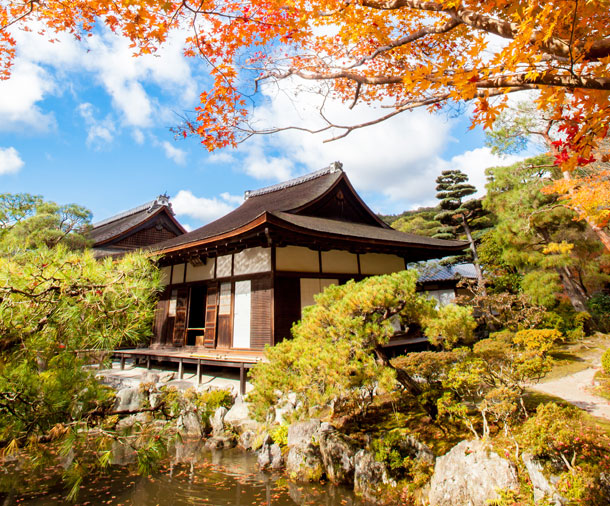
“Where the bee sucks, there suck I!”
marzo 23, 2014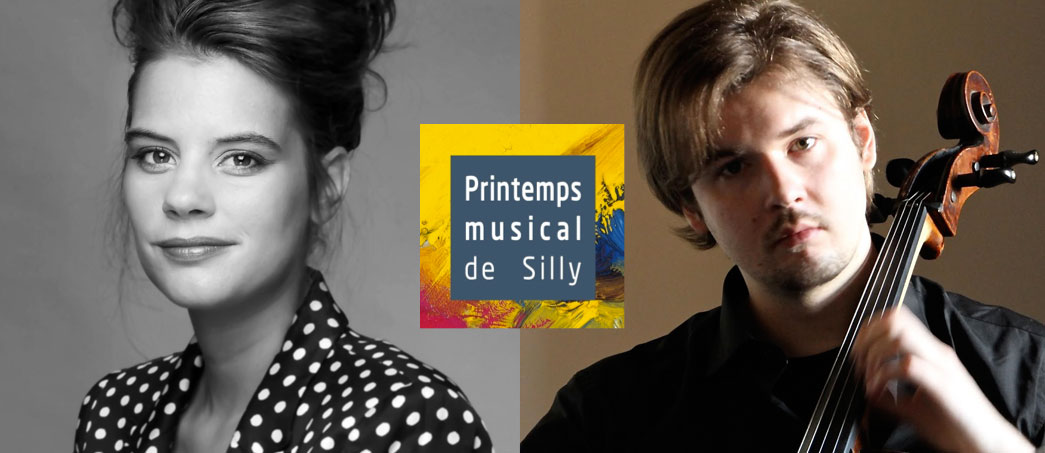
Printemps Musical de Silly
marzo 28, 2014Located in the central part of Japan’s main island Honshu, about 450km west of Tokyo, is Kyoto. Japan’s former capital city is home to countless ancient shrines and temples, and is popular with tourists all year round. There are festivals in summer, colourful foliage in autumn, snow in winter and, of course, cherry blossom in spring.
It is mid-afternoon on a warm spring day in Maruyama Park in Kyoto, Japan. Everywhere I look there are people – happy, smiling people. Almost every inch of grass is covered with colourful plastic sheeting, on top of which sit families and groups of friends, young and old, gathered around piles of food. The food varies between large family-sized packets of crisps, plastic boxes of home made sushi and noodles, and steaming boxes of hot food bought from nearby stalls. People are drinking and chatting, someone somewhere plays an acoustic guitar, while a girl sings and taps a tambourine against her thigh. Some high school kids dance in unison to the music pumping in their ears. People drink from cans and plastic cups, laughing as they reach across for more alcohol and bottled green tea. Shoes sit in pairs beside the plastic sheets, waiting to be reclaimed.
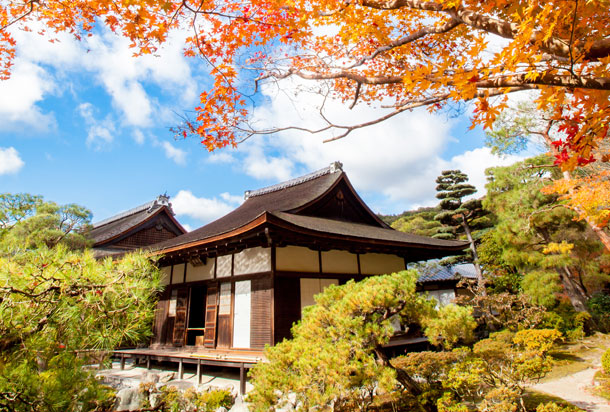
Ginkakuji temple
Kyoto, Japan
To an outsider looking in, it can be hard to understand quite what is going on. What could cause such a large amount of people to flock to the park for a picnic? And it is not just this park, but practically every park in Japan.
The answer becomes apparent as a gentle breeze passes through the trees. A small cheer erupts and people dive for cameras and smartphones. Fluttering through the air are hundreds of delicate cherry blossom petals, like a soft flurry of pink snow. They scatter across the park, landing in children’s hair as they spin and jump, trying to catch them. Parents attempt to capture the scene in a photograph. Young couples hold hands beneath the branches of the trees, holding phones out in front of themselves to snap their faces in a picture which will be instantly uploaded and shared across the internet.
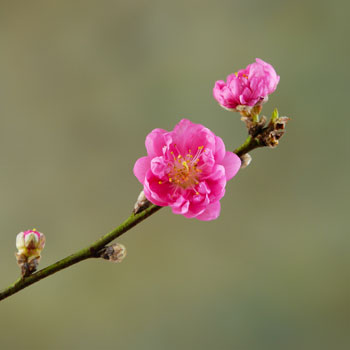
Pink cherry blossom sakura
This is hanami or, in English, cherry blossom viewing. I never cared much for flowers until I visited Japan, but there is something about hanami which makes even the grumpiest of people suddenly obsessed with the pretty pink flowers known as sakura. In a few hours, one could easily take a hundred photos, snapping again and again, trying to get the right combination of pink petals against blue sky.
From late March to early May, cherry blossoms bloom across Japan, sweeping the country, spreading the joys of spring as they go. The blooming of the flowers is even forecast and reported on so that people can know when the best viewing time is, and head to the most scenic spots. In Japan, the cherry blossom is not only the most famous flower, it is also an important cultural symbol – a metaphor for the transience of life. A cherry blossom lasts only a short time before falling, much like we do ourselves. Life comes and life goes – and it is beautiful. Although that might seem like a depressing thought in some ways, the Japanese attitude seems to be more that we should celebrate the beautiful part, rather than dwelling on the inevitable end.
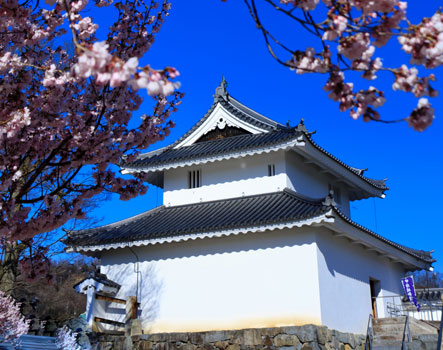
Kofu castle in spring, Japan
When visiting Japan during the cherry blossom season, prepare for crowds. It is the best time to visit major tourist attractions if you want to get classic picture postcard shots of temples and shrines with a side of cherry blossom, but you will have to be patient and wait your turn for the perfect picture. Luckily, the Japanese seem to be very respectful of everyone wanting to have a go at taking the perfect photo, and even form orderly queues by landmarks and viewing spots.
It is clear that Maruyama Park is the perfect place for hanami. Take in the scene like I did, join in and if you have not brought your own food, there is an array of stalls or yatai, dotted around the park, selling things like takoyaki (fried octopus dumplings), yakisoba (fried noodles with meat or vegetables), and sweet food like choco banana (bananas dipped in chocolate) or ningyo-yaki (fluffy cake-like snacks in the shape of popular cartoon characters).
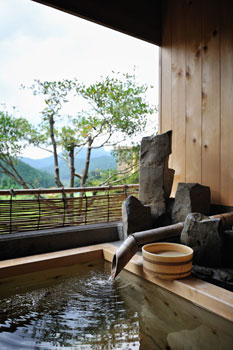
Japanese open air hot spa
Bus is by far the best way to travel around Kyoto, so after purchasing a City Bus All-day Pass at Kyoto Station first thing in the morning, I hopped on a bus and hopped off again at the temple Ginkaku-ji (the Temple of the Silver Pavilion) on the north-east side of the city. I knew I would be facing the masses later on, so I decided to start my early-April spring day in Kyoto peacefully, with a walk along Tetsugaku-no-michi (the Philospher’s Path). So called because of a 20th century Kyoto University professor and philosopher who was believed to have used the path for daily meditation, the Philosopher’s Path is a quiet, picturesque pathway lined with cherry trees. It looks divine in spring. The trees bend over the small canal which runs alongside the path, scattering their petals on the calm surface of the water.
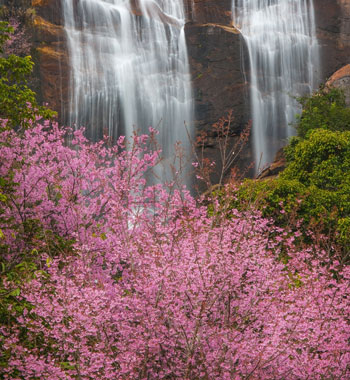
Cherry Blossom
As I watched the cherry blossom petals flutter through the air and meet their soggy demise, my mind began to fill with thoughts about life and how easily it passes by. It was still early in the morning and I did not see many other people as I walked, but I made an effort to smile at those I did pass, and my efforts were returned with knowing smiles and nods. We all shared the same thoughts of cherry blossoms and life – knowing that even though the cherry blossoms were starting to fall, they had been beautiful while they lasted, and they would blossom again next year.
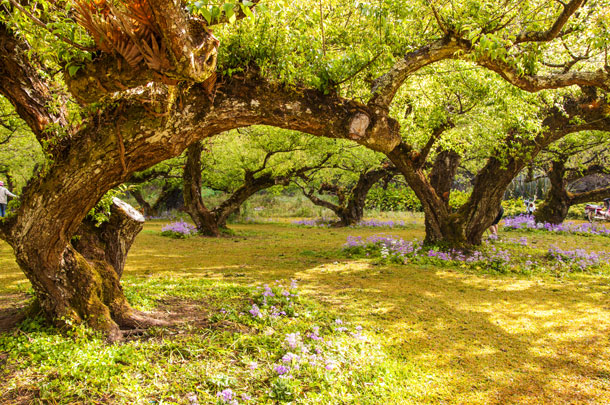
Peach trees
The southern end of the Philosopher’s Path finishes not far from Nanzen-ji – a temple with spacious grounds and an impressive zen garden. If you are still feeling philosophical, this is the perfect place to sit and dream for a while, staring at the tiny, clean white stones, tidily raked into lines. From Nanzen-ji, I could have easily taken another bus to save time, but Kyoto is an interesting city to walk around, and on such a perfect spring day it would have felt wrong to have been cooped up on public transport.
A short walk from Nanzen-ji brought me to another temple, Chion-in. One of the most interesting features of Chion-in is its “nightingale floor”: squeaky wooden floorboards which were intentionally made that way to detect intruders at night. Only a true ninja would be able to cross them silently!
Moving from a peaceful philosophical path, to slightly more touristy temples, I finally reached my destination – Maruyama Park, which is just south of Chion-in. When I arrived, looking for my friends’ hanami party, the air was buzzing with chatter and laughter. From time to time small breezes swept through the trees, causing another shower of pretty, pink blossoms to fall on the gathered people.

Countryside sakura blossom
One could easily while away many hours at a hanami party – or even just people-watching – in Maruyama Park. But, aware of the daylight hours running short, I decided to leave and walked through the park into the grounds of a shrine called Yasaka Jinja.
Yasaka Jinja is one of the most famous shrines in Kyoto, located between the popular Gion and Higashiyama districts. It is an absolute tourist trap all throughout the year. It is easy to become a bit overwhelmed by shrines and temples in Kyoto. They all start merging together if you see too many in one day, so I decided to leave exploring Yasaka Jinja for another day, as my time was running short.
But flower viewing does not have to stop when daylight fades, so I headed up through the bustling streets of Gion and hopped on a bus which would take me over to Nijo Castle, where they were holding a night-time illumination event. With more than four hundred cherry trees of various types, Nijo Castle is a prime spot for cherry blossom viewing, both day and night. Lamps are placed along the paths under or angled at certain trees, lighting them up quite magically. The lamps create a different kind of atmosphere to the peaceful Philosopher’s Path and the packed party in the park. I found myself reaching for my camera yet again.
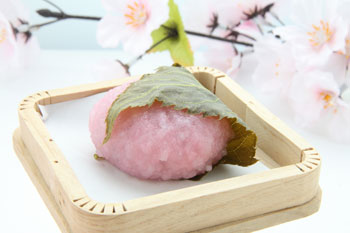
Spring Japanese confectionery
Walking through the castle grounds at night, I felt as though I had stepped into a dream world. Butterfly-like women flitted around me wearing colourful yukata (light cotton kimono), posing by cherry trees with their friends, fingers making peace signs automatically at the sight of a camera. Somewhere in the distance I heard music – a string instrument being plucked slowly. Following the sound, I found a hall in which a small crowd was gathered. I snuck in, not sure if I was meant to be there. On the stage were three women playing koto, a traditional Japanese instrument. The sound was quintessentially Japanese, evoking a time long forgotten, and I found myself captivated.
It was only about 9.30pm when I left the castle, but I was exhausted from a day of walking around Kyoto. So I headed back to the old ryokan (Japanese inn) where I was staying. When I finally lay down on the futon and closed my eyes, all I could see was a blur of pale pink from a day of chasing cherry blossoms.
[note]
Fact Box
For more information about travelling in Japan
[/note]
visit the Japan National Tourism Organisation (JNTO) www.jnto.go.jp.



